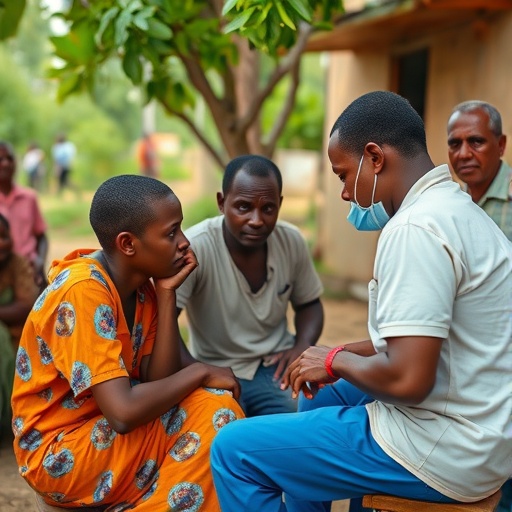FBI report disproves Trump’s claim of a Biden-era out-of-control crime wave – The Guardian

Analysis of 2024 US Crime Statistics in the Context of Sustainable Development Goal 16
Introduction: Measuring Progress Towards Peace, Justice, and Strong Institutions
A recent report from the Federal Bureau of Investigation (FBI) on national crime statistics for the year 2024 provides critical data for evaluating progress towards United Nations Sustainable Development Goal 16 (SDG 16), which aims to promote peaceful and inclusive societies, provide access to justice for all, and build effective, accountable institutions. The findings indicate significant advancements in reducing violence, directly aligning with SDG Target 16.1, despite political narratives suggesting the contrary during the 2024 election cycle.
Key Findings: A Significant Reduction in Violent Crime
Alignment with SDG Target 16.1: Reducing Violence and Death Rates
The 2024 FBI data demonstrates a marked decrease in all forms of violent crime, indicating substantial progress toward SDG Target 16.1, which calls for a significant reduction in all forms of violence and related death rates everywhere. The national violent crime rate has fallen to levels not seen since the 1960s.
- Overall Violent Crime: A 4.5% year-on-year decrease was recorded nationally.
- Homicide Rate: Murder and non-negligent manslaughter fell by a notable 14.5% from 2023 figures.
- Gender-Based Violence (SDG 5.2): Reported rapes decreased by 5.2%, contributing to SDG 5’s goal of eliminating violence against women.
- Other Violent Offenses: Aggravated assaults and robberies declined by 3% and 8.9%, respectively.
Progress in Urban Centers Towards Inclusive Societies (SDG 11 & 16)
The data reveals that major metropolitan areas have seen the most significant improvements in safety, a key component of creating inclusive and sustainable cities as outlined in SDG 11 and SDG 16. In cities with populations exceeding one million, the following was observed:
- Murders declined by 19.1%.
- Rapes, robberies, and aggravated assaults showed decreases ranging from 1% to 9.8%.
Challenges in Institutional Accountability and Data Integrity
Data Limitations and the Importance of Effective Institutions (SDG 16.6)
While the trends are positive, the report’s integrity relies on the effectiveness and accountability of national institutions, a cornerstone of SDG 16. Analysts note a key limitation: the data is compiled from voluntary submissions from law enforcement agencies. The FBI has retitled its report to “Reported Crimes in the Nation Statistics” to reflect that not all crimes are reported to law enforcement and not all agencies submit data. This highlights the ongoing need to strengthen national institutions (SDG Target 16.a) to ensure comprehensive and reliable data collection for monitoring peace and justice.
Hate Crimes and Non-Discrimination (SDG 10.3 & 16.b)
The report addresses hate crimes, a direct challenge to SDG Target 16.b (promote and enforce non-discriminatory laws and policies) and SDG 10 (Reduced Inequalities).
- Incidents: In 2024, there were 11,679 criminal incidents motivated by bias, a slight decrease from 11,862 in 2023.
- Concerns: Civil rights organizations, such as the Arab American Institute, express caution, citing chronic underreporting and the politicization of data collection. This underscores the challenge in achieving truly inclusive societies and ensuring equal access to justice for all.
Law Enforcement, Justice, and the Rule of Law (SDG 16.3)
Safety of Law Enforcement Personnel
The report also sheds light on the risks faced by those working within justice institutions.
- Fatalities: 64 law enforcement officers were feloniously killed in the line of duty in 2024.
- Assaults: The number of officers assaulted rose to 85,730, a 10-year high.
Institutional Accountability and Access to Justice
Challenges to promoting the rule of law and ensuring equal access to justice (SDG Target 16.3) are evident. Reports indicate that prosecutors have declined to pursue charges in numerous cases of alleged assaults on immigration officers, citing false or misleading reports by the officers themselves. This situation emphasizes the critical need for accountability within justice institutions to maintain public trust and ensure the rule of law is applied fairly and effectively.
Which SDGs are addressed or connected to the issues highlighted in the article?
-
SDG 16: Peace, Justice and Strong Institutions
This goal is central to the article, which focuses on crime statistics, violence, and the role of justice institutions like the FBI and law enforcement agencies. The article discusses the reduction of violence, the accuracy of crime reporting, and the safety of law enforcement officers, all of which are core components of SDG 16.
-
SDG 10: Reduced Inequalities
The article specifically addresses hate crimes, which are acts of violence and discrimination against individuals based on their race, ethnicity, religion, sexual orientation, and other identities. This directly connects to the goal of reducing inequalities and ensuring equal protection for all groups within society.
What specific targets under those SDGs can be identified based on the article’s content?
SDG 16: Peace, Justice and Strong Institutions
-
Target 16.1: Significantly reduce all forms of violence and related death rates everywhere
The article is almost entirely dedicated to this target. It provides detailed statistics from an FBI report on the decrease in various forms of violence. It states that “Every category of crime decreased in frequency, and violent crime in particular dropped to levels not seen since the 1960s.” It specifically mentions reductions in murder, rape, aggravated assault, and robbery.
-
Target 16.3: Promote the rule of law at the national and international levels and ensure equal access to justice for all
This target is addressed through the discussion on the reliability and perception of crime data. The article mentions the “chronic underreporting problem” regarding hate crimes and the fact that FBI figures are compiled from “voluntary submissions.” This points to challenges in ensuring that the justice system is fully aware of and able to act on all crimes, thereby affecting equal access to justice. The mention of prosecutors dropping charges due to “false and misleading reports by immigration officers” also speaks to the functioning of the rule of law.
SDG 10: Reduced Inequalities
-
Target 10.3: Ensure equal opportunity and reduce inequalities of outcome, including by eliminating discriminatory laws, policies and practices
This target is relevant due to the article’s section on hate crimes. The report documents “11,679 criminal incidents, and 13,683 related offenses motivated by bias toward race, ethnicity, ancestry, religion, sexual orientation, disability, gender or gender identity.” These crimes are a direct manifestation of inequality and discrimination, and tracking them is essential to addressing and eliminating such practices.
Are there any indicators mentioned or implied in the article that can be used to measure progress towards the identified targets?
Indicators for Target 16.1
-
Homicide and Violent Crime Rates
The article provides explicit quantitative indicators. It states that “murder and non-negligent manslaughter” fell by 14.5%, “all violent crime nationally” decreased by 4.5%, “Reported rapes were down 5.2%,” and “aggravated assaults and robberies declined 3% and 8.9% respectively.” These statistics are direct measures of progress toward reducing violence.
-
Violence against Law Enforcement Officers
The article provides specific numbers that serve as indicators of violence against agents of the state. It reports that “64 law enforcement officers had been killed ‘feloniously’ during 2024” and that the number of officers assaulted “rose to 85,730, a 10-year high.” These figures measure a specific form of violence within society.
Indicators for Target 16.3
-
Proportion of Crime Reported to Authorities (Implied)
The article implies this indicator by highlighting its shortcomings. The caution that “Not every crime is reported to law enforcement” and the reference to the “chronic underreporting problem” for hate crimes suggest that the rate of crime reporting is a key metric for measuring public trust and access to justice.
Indicators for Target 10.3
-
Number of Hate Crime Incidents
The article provides a direct indicator for measuring crimes based on discrimination. It cites specific figures from the FBI report: “11,679 criminal incidents, and 13,683 related offenses motivated by bias.” Tracking these numbers is a way to measure the prevalence of inequality-driven violence.
SDGs, Targets and Indicators Table
| SDGs | Targets | Indicators |
|---|---|---|
| SDG 16: Peace, Justice and Strong Institutions | 16.1: Significantly reduce all forms of violence and related death rates everywhere |
|
| SDG 16: Peace, Justice and Strong Institutions | 16.3: Promote the rule of law at the national and international levels and ensure equal access to justice for all |
|
| SDG 10: Reduced Inequalities | 10.3: Ensure equal opportunity and reduce inequalities of outcome… by eliminating discriminatory… practices |
|
Source: theguardian.com

What is Your Reaction?
 Like
0
Like
0
 Dislike
0
Dislike
0
 Love
0
Love
0
 Funny
0
Funny
0
 Angry
0
Angry
0
 Sad
0
Sad
0
 Wow
0
Wow
0



























;Resize=805#)


















































